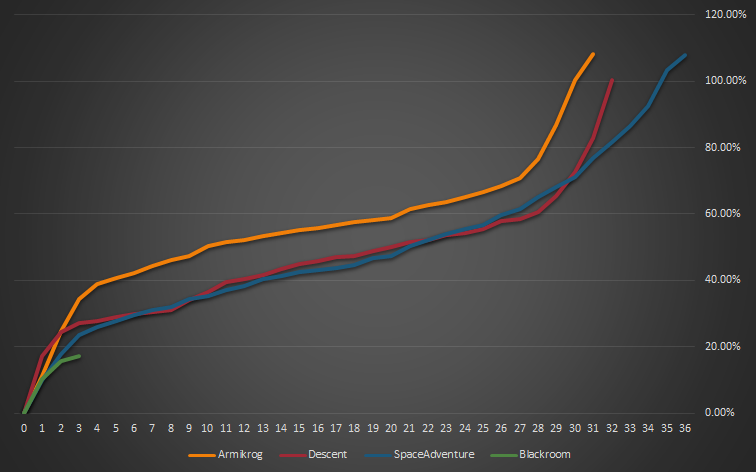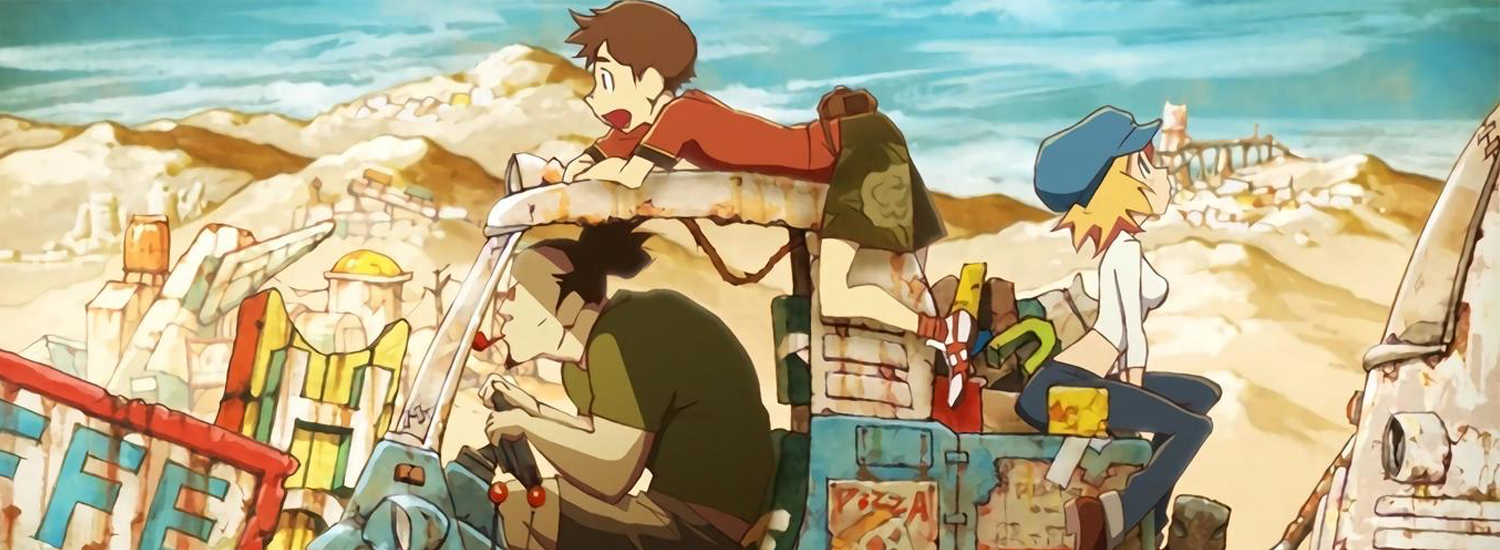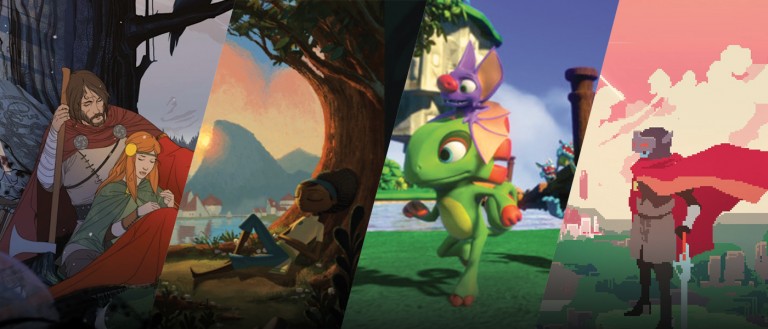Raising over $3.45 million in 2012 – Double Fine Productions Kickstarter campaign for Broken Age undoubtedly helped establish crowdfunding as a legitimate alternative for raising funds to create a video game. With the inevitable influx of campaigns that came as a result of this – these past four years has had its fair share of spectacular successes and fantastic failures.
No stranger to these two concepts, John Romero’s decision to put his Blackroom Kickstarter campaign on hold (until a gameplay demo is made) appears to be a decision informed by these past triumphs and tribulations. As NeoGAF user ‘8 X 11 Printer Paper’ illustrated in chart form – Blackroom only managed to raise over $130,000 in its first four days. When compared with other recent nostalgia-laden campaigns, Blackroom appeared to be on a trajectory of failure. With a campaign that only displayed concept art, a proposed style of gameplay and a music composer – it’s no surprise that its minimal content detracted from the campaign as a whole. In light of Blackroom’s postponement - let’s take a look at a crowdfunding campaign that got it right and one that missed the mark to illustrate what Night Work Games (a subsidiary of Romero games) should and shouldn’t do with their campaign’s impending second attempt.
In light of Blackroom’s postponement - let’s take a look at a crowdfunding campaign that got it right and one that missed the mark to illustrate what Night Work Games (a subsidiary of Romero games) should and shouldn’t do with their campaign’s impending second attempt.
THE RIGHT WAY
Shovel Knight (Project Launched: March 17th, 2013)
Although Yacht Club Games was founded by accomplished developer Sean Velasco – several crowdfunding campaigns have shown that having a great reputation doesn’t always translate into a successful campaign. To dispel any backer hesitation, Yacht Club Games put together a campaign that was not only thorough but transparent in its approach - constantly updating backers on the games progress, sharing screenshots of gameplay and informing backers of as many details about the game (major and minute) as they possibly could.

To coincide with and promote the campaign, the developer distributed copies of their initial demo (which was also at PAX 2014) to several popular YouTube gaming personalities. A smart move - not only because of the exposure their campaign received - but because it also exhibited to backers, that Yacht Club Games believed in the quality of Shovel Knight and were willing to let the public see the game - even in its infancy. With a funding goal of $75,000, the campaign went on to raise a total of $311,502 - achieving all announced stretch goals by the campaign’s end.
With the promise of a Blackroom gameplay demo in the near future - it will be interesting to see how Romero and Carmack utilise it for the promotion of their second campaign. With Night Work Games lamenting in their backer update that the demo is something they “should have included…at launch” – it’s not unrealistic to assume that this demo may make or break their campaign – as it appears to be the sole reason for the Kickstarter’s cancellation.
THE WRONG WAY
Red Ash: The Indelible Legend (Project Launched: July 5th, 2015)
Upon its announcement, Red Ash: The Indelible Legend was toted as the spiritual successor to Capcom’s cult classic, Mega Man Legends. With Comcept coming off the resounding success of their Mighty No. 9 campaign, complacency seemed to get the better of them when it came to their approach for this campaign.
With minimal press coverage due to announcing the campaign on the fourth of July – the campaign suffered another setback when backers were initially confronted with the knowledge that only a PC version was going to be developed. Later in the campaign, Comcept eventually announced that there would be a console port if a million dollar stretch goal was met. However, the chosen console was to be determined by backers voting for their preference with the winning console being announced after the Kickstarter had ended. At this point (with over $450,000 raised), it was apparent the campaign was going to fall short of its $800,000 goal. Unexpectedly, Comcept then announced that Chinese company Fuze Entertainment had fully funded the entire campaign. With the campaign now funded, Comcept announced that all initial backers should consider their initial backing as “a contribution to stretch goals from here on out.” – without actually announcing (until three days before the campaign’s end) what those new stretch goals were. Not surprisingly, the decision to keep the initial contributions bewildered backers – as Comcept no longer required their money to complete the project.
At this point (with over $450,000 raised), it was apparent the campaign was going to fall short of its $800,000 goal. Unexpectedly, Comcept then announced that Chinese company Fuze Entertainment had fully funded the entire campaign. With the campaign now funded, Comcept announced that all initial backers should consider their initial backing as “a contribution to stretch goals from here on out.” – without actually announcing (until three days before the campaign’s end) what those new stretch goals were. Not surprisingly, the decision to keep the initial contributions bewildered backers – as Comcept no longer required their money to complete the project.
With the cancellation of Blackroom’s campaign, backers were informed that “We (Night Work Games) will, of course, honor backer achievements in the next campaign (and [give] an extra something for those of you who continue to support us in the next campaign).” The decision to honour backer achievements is an honourable commitment as there is no obligation – however, I do think it’s a little unfair to coax initial backers with an “extra something” – when they were willing to contribute to a campaign that left a lot to the backers imagination. Regardless, I think it’s fair to say that Romero and Co should obviously avoid replicating any facet of Comcept’s convoluted campaign.[divider][/divider]
The Doom WAD’s released by Romero this year exhibited that he’s still skilled at the art of level design. However, with Romero advertising the E1M4B map “as the kind of classic FPS gameplay I’m promising” for Blackroom – it was unrealistic to assume that this would be enough to convince fans to back Blackroom – considering the WAD contained no new systems or mechanics to experiment with.
If Blackroom and Red Ash’s campaigns are anything to go by – it’s that people aren’t always willing to fund something just for nostalgia’s sake. In fact, it’s that deep nostalgia that sometimes makes backers expect more due to a previously set precedent. As long as Romero and Carmack treat their fans with the same respect their fans have for their work – their second campaign should be in the black in no time.



